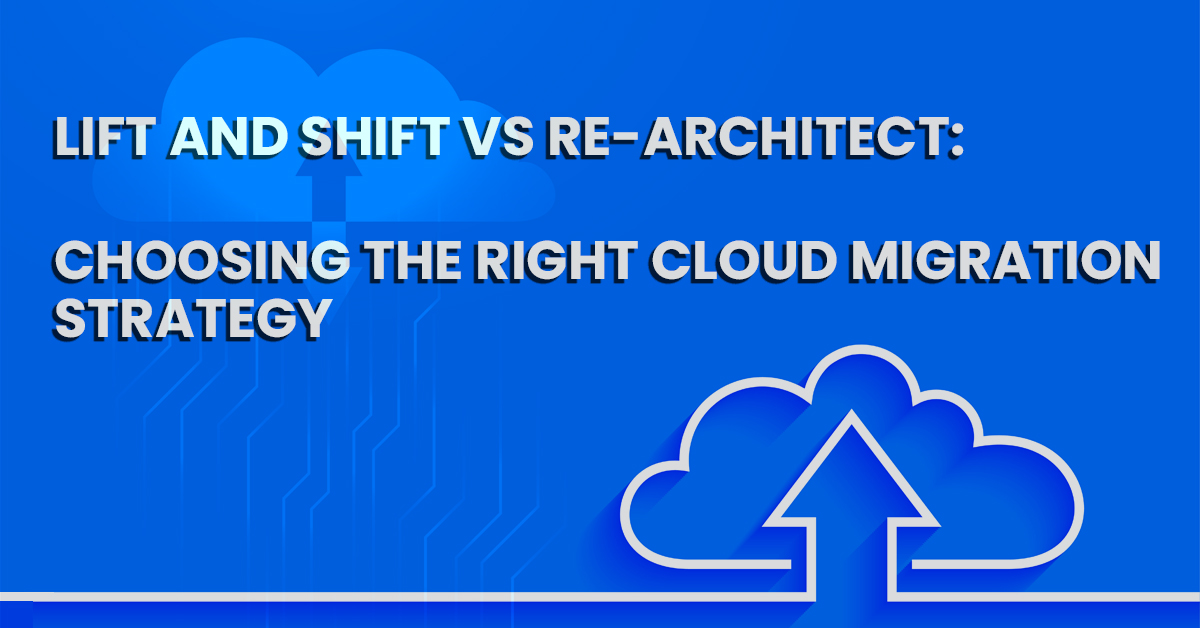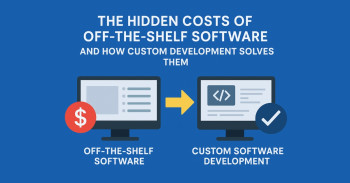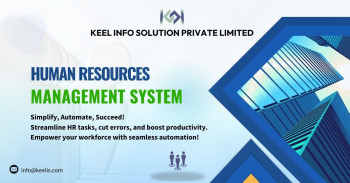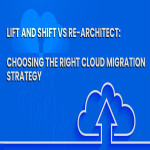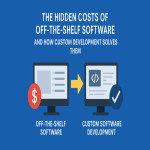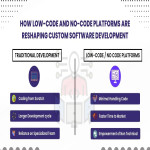By 2025, over 95% of new digital workloads will run on cloud-native platforms. However, despite this rapid adoption, more than half of cloud migrations still fall short of cost and performance goals. The main reason? Selecting the wrong migration strategy often results in wasted resources, mounting technical debt and reduced agility.
Whether your organization is modernizing legacy systems or scaling for innovation, the question isn’t if you should migrate — it’s how. Two of the most common approaches are Lift and Shift and Re-architect. Each offers unique benefits and trade-offs and understanding these differences is critical to a successful cloud journey.
In this article, we’ll explain what each strategy involves,
when to apply them, how they differ and share real-world examples that
demonstrate their effectiveness.
Introduction: Why Cloud Migration Matters
Cloud migration is the process of moving digital assets — such as applications, data and IT workloads — from on-premises servers or legacy infrastructure to a cloud environment like AWS, Microsoft Azure, or Google Cloud Platform (GCP).
Organizations migrate to the cloud to gain flexibility, scalability and efficiency. Cloud computing reduces hardware maintenance costs, enables faster innovation and supports remote or global operations seamlessly. However, a successful migration requires more than just transferring workloads — it demands the right strategy to align with business goals.
That’s where Lift and Shift (Rehosting) and Re-architect
(Refactoring) come into play. These are two of the most adopted approaches
to cloud migration. Let’s explore what they mean, their pros and cons and how
to choose between them.
1. What is Lift and Shift (Rehosting)?
The Lift and Shift or Rehosting strategy involves moving
applications and workloads to the cloud as-is, with little or no
modification to the underlying architecture. You essentially “lift” your
existing applications from your on-premises data center and “shift” them to a
cloud environment.
This method is fast, straightforward and often the first step for organizations starting their cloud journey.
Example scenario:
A manufacturing company running a legacy ERP system wants to move to the cloud
quickly to reduce data center costs. Instead of redesigning the entire ERP,
they replicate their current setup on AWS EC2 instances. The functionality
remains the same, but it now operates on cloud infrastructure.
Pros of Lift and Shift
- Speed
of migration:
Minimal changes mean faster deployment — ideal for organizations with tight timelines. - Lower
upfront cost:
Since no major code or architecture changes are required, migration costs are relatively low. - Reduced
business disruption:
The existing application structure and workflows remain intact. - Quick
ROI realization:
You can start benefiting from cloud infrastructure (like reduced maintenance costs) almost immediately.
Cons of Lift and Shift
- Limited
cloud optimization:
Applications are not redesigned to use native cloud features, limiting performance benefits. - Potential
performance inefficiencies:
Legacy architectures may not scale well in the cloud environment. - Technical
debt persists:
Existing inefficiencies, dependencies, or outdated code remain unchanged.
In short : Lift and Shift is best for rapid migration
and cost reduction, not for deep modernization.
2. What is Re-architect (Refactoring)?
Re-architecting, also known as refactoring, focuses on redesigning applications to take full advantage of cloud-native features and services. This may involve rewriting parts of the code, transitioning to a microservices architecture, or adopting serverless computing. The objective is to build a flexible, scalable and resilient system that’s optimized for cloud performance.
Example scenario:
A SaaS startup running a monolithic web application decides to re-architect it is
using containers and Kubernetes on Azure. The new architecture
enables continuous deployment, auto scaling and better fault tolerance.
Pros of Re-architect
- Optimized
performance and scalability:
Applications are tailored to take full advantage of cloud elasticity. - Long-term
cost savings:
Although the initial investment is higher, efficient resource utilization reduces ongoing costs. - Faster
innovation:
Easier to integrate with modern tools, CI/CD pipelines and advanced analytics. - Resilience
and flexibility:
Cloud-native designs can adapt quickly to business or market changes.
Cons of Re-architect
- Higher
upfront investment:
Requires time, skilled developers and planning. - Complexity:
Deep architectural changes demand robust testing and governance. - Longer timelines:
The migration process can take months or even years, depending on system complexity.
In short, Re-architecting is best suited for
organizations focused on achieving long-term innovation, scalability and a
full transition to cloud-native solutions.
3. Lift and Shift vs Re-architect: A Side-by-Side Comparison
|
Feature |
Lift and Shift (Rehosting) |
Re-architect (Refactoring) |
|
Speed of Migration |
Fast (weeks to months) |
Slower (months to a year) |
|
Upfront Cost |
Lower |
Higher |
|
Cloud Optimization |
Low |
High |
|
Initial Risk |
Lower |
Higher |
|
Long-term ROI |
Moderate |
High |
|
Performance |
Limited to legacy design |
Optimized for cloud |
|
Scalability |
Basic scaling |
Auto-scaling and elasticity |
|
Technical Complexity |
Simple |
Complex |
|
Innovation Potential |
Limited |
Excellent |
|
Best Use Case |
Quick migration, short-term savings |
Long-term digital transformation |
4. When to Use Each Strategy
When to Choose a Lift and Shift Approach
You’re facing strict migration deadlines (for example, an upcoming data center lease expiration).
Your team currently lacks in-depth cloud expertise.
You want to experience the benefits of the cloud before
committing to a full modernization.
Your existing applications are stable, legacy systems
that rarely require updates.
Budget limitations make extensive redevelopment impractical.
Example:
A government agency successfully migrated its document
management system to AWS using a Lift and Shift strategy. Within six months, it
achieved a 25% reduction in infrastructure costs and improved system uptime —
all without rewriting a single line of code.
When to Choose Re-architect
- You
want to fully embrace cloud-native technologies for future
scalability.
- Your
business depends on high performance, agility and innovation.
- You’re
modernizing applications for microservices, AI, or DevOps
integration.
- You
need to eliminate technical debt and future-proof your
architecture.
- Your migration timeline and
budget allow for a comprehensive redesign.
Example:
A fintech company re-architected its payment processing system using serverless
functions and event-driven architecture on AWS Lambda. This enabled them to
handle 10x more transactions during peak hours while reducing compute
costs by 40%.
5. Real-World Case Studies
Case Study 1: Lift and Shift for Rapid Cloud Adoption
A global retail chain with 400 stores needed to migrate its inventory management system from on-premises to the cloud within three months. The company opted for a Lift and Shift migration to Google Cloud.
Results:
- Migration
completed in 90 days.
- Infrastructure
maintenance costs reduced by 35%.
- Improved reliability with built-in redundancy and faster data access.
Though they didn’t immediately optimize workloads, the fast
migration enabled them to stay competitive and later plan a phased
re-architecture.
Case Study 2: Re-architect for Long-Term Scalability
A healthcare startup offering telemedicine services faced scalability issues during high demand. They chose to re-architect their application into microservices using AWS ECS and DynamoDB.
Results:
- Response
time improved by 40%.
- Infrastructure
costs reduced by 30% through auto-scaling.
- Enabled
rapid deployment of new features like AI-based diagnostics.
The re-architected design empowered them to innovate quickly
while maintaining compliance and security standards.
6. The Hybrid Approach: Combining Both Strategies
It’s important to note that many organizations adopt a hybrid approach. Not all applications require re-architecture — some can be lifted and shifted first, then optimized over time.
For instance, you can start with Lift and Shift for non-critical workloads to gain early cost benefits and cloud experience, then re-architect strategic applications to leverage cloud-native features later.
This approach minimizes disruption, spreads out costs and
ensures steady progress toward full modernization.
7. Conclusion: Making the Right Choice for Your Cloud Journey
Cloud migration isn’t just a technical decision — it’s a
strategic business move. The right choice between Lift and Shift and Re-architect
depends on your goals, budget, timeline and existing infrastructure.
- Choose
Lift and Shift if you need speed, simplicity and short-term
savings.
- Choose
Re-architect if you seek innovation, scalability and long-term
agility.
- Or combine both — start small, learn and evolve your strategy as your cloud maturity grows.
Before leaping, evaluate your application portfolio, identify dependencies and run pilot migrations to assess performance and cost implications.
The cloud is not just a destination — it’s a continuous journey toward transformation, innovation and resilience. The strategy you choose today will shape how your business thrives tomorrow.
